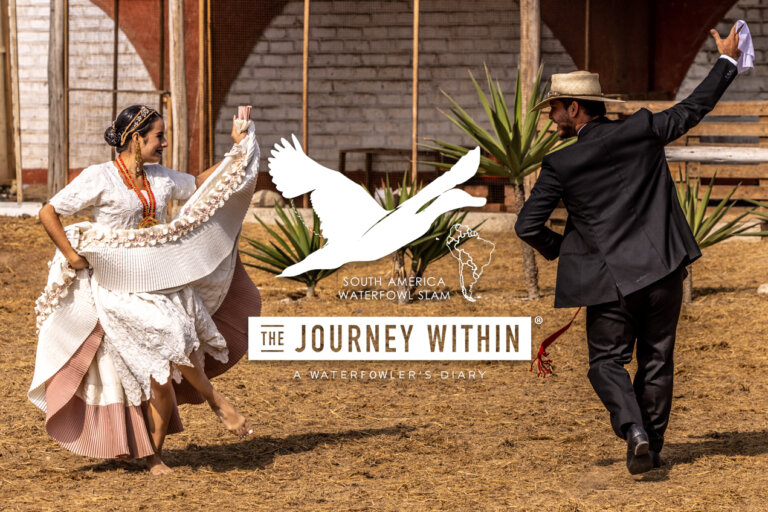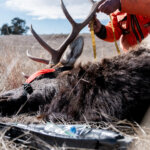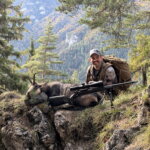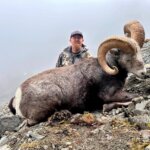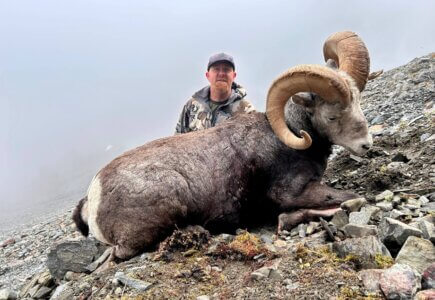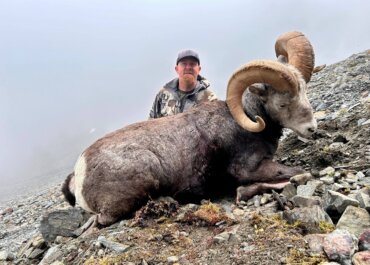The second leg of my single-season South America Waterfowl Slam began in the early morning hours of June 6, 2022. I boarded a plane in Grand Rapids, Michigan headed for Panama City, Panama. I’d never been to Panama, and found it a very interesting, unique country to see from the plane’s window. Watching the many ships waiting their turns to move through the Panama Canal and into the Pacific Ocean was especially fascinating. After we landed, it felt like we were still in the USA as we grabbed a to-go order of Nathan’s Hot Dogs inside the airport. From Panama, we were off to Trujillo, Peru to continue my slam.
Peru posed some challenges that we didn’t have to account for in Argentina. Primarily, a drastic elevation change. Peru is split into two regions: Pacific Ocean coastal areas and the Andean Mountain areas. To find all seven remaining species, I’d be hunting both regions. The elevation difference between Peru’s two regions goes from sea level to 14,000 feet above sea level. It even approaches 15,000 feet at the peaks of Peru’s highest mountains. I had hunted at 15,000 feet before, but no matter how fit you are, it is not easy for a non-acclimated person. During my previous high-elevation hunts, I had been able to slowly acclimate as I made my way up to higher elevations over the course of several days. My upcoming hunt would have me going from the Pacific Coast into the Andes Mountains in a single day. One thing was certain, it was going to be an adventure.
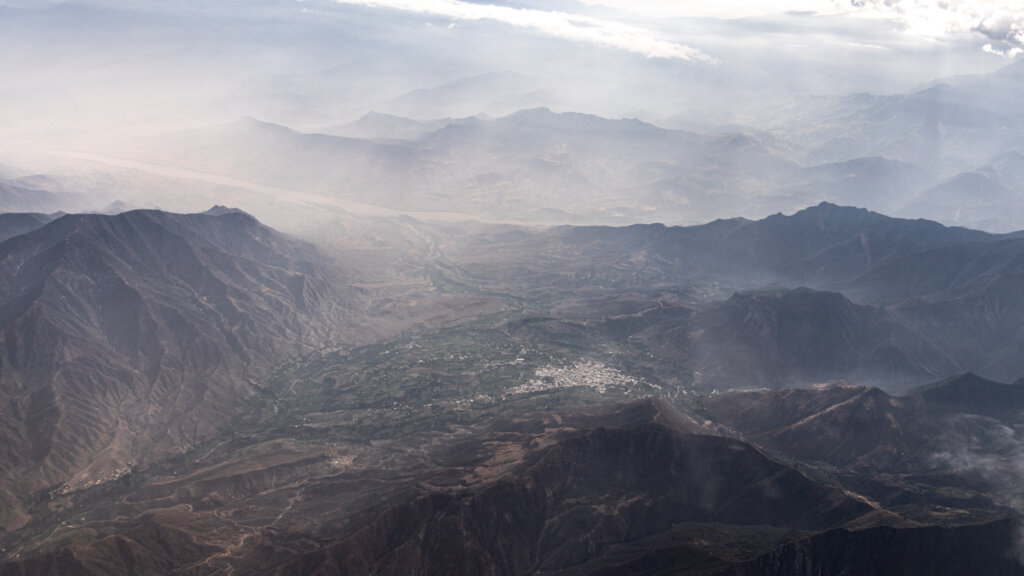
The Pacific Ocean forms Peru’s western border, while their northern neighbors are Ecuador and Columbia. Brazil’s Amazon basin is to the east and Bolivia and Chile are to the south. This tropical country has an extremely diverse habitat with the arid Peruvian Pacific western coastal region, the central Andes Mountain region and the eastern Amazon rainforest region.
By late afternoon on June 6, we touched down at the Trujillo, Peru International Airport. Trujillo is the third largest city in Peru. Most travelers arrive in Peru’s capital city, Lima, but because our hunt was starting more than 300 miles north of Lima, on the coast near Trujillo, we chose that airport. It was immediately obvious that international flights into Trujillo were not an everyday occurrence. The arrival process was chaotic, and we worried it would take hours to get through customs. Posted signs throughout the customs area stated that tips were not allowed, although, when customs officers started to look for serial numbers on our binoculars so that they could record them, it became obvious that tips were expected to make our experience quicker and easier. Once the customs process was handled, everything was suddenly expedited and we soon found ourselves outside the airport in the late-afternoon, 70° sunshine.
We loaded our bags on a van, and after a short drive we arrived at our hotel and checked in. I was accompanied on this trip by my dad, Earl, and field producers, Justin and Lee. Dad was the only one who had been here. He visited Machu Picchu in Peru in 1991. It was a new experience for the rest of us. Dinner was excellent with fresh fish, veggies, and a Peruvian red wine. At Dad’s insistence, we all had to try Pisco Sours with our dessert. Dad said they were as good as he remembered.
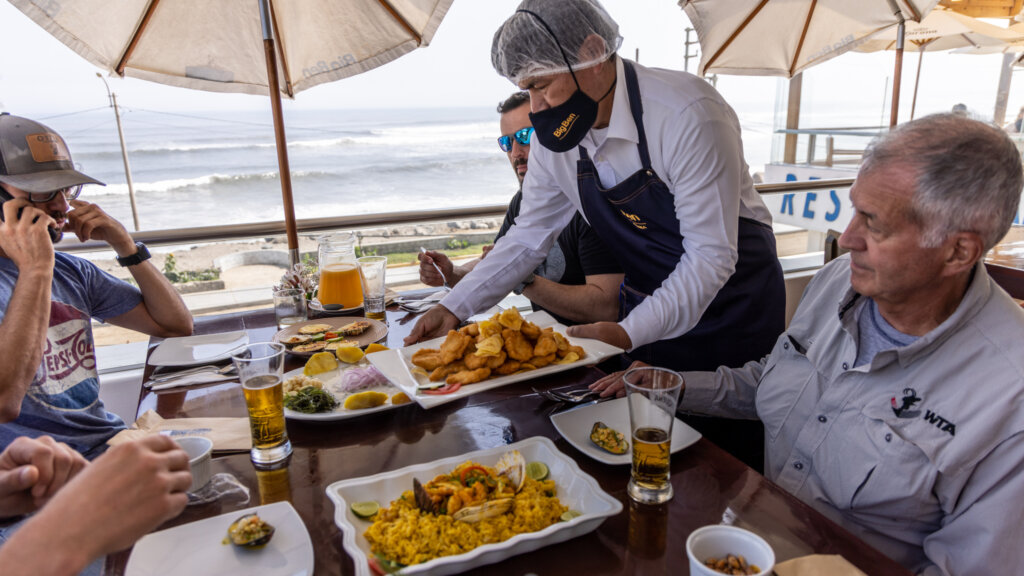
The next morning, our outfitter was guiding another group of duck hunters near Lima, so he was unable to join us until later in the day. He did, however, arrange for a friend of his to take us around to some of the nearby cultural sites. We went to pre-Columbian Chan Chan, the largest adobe city in the ancient world. It was designated a World Heritage Site by UNESCO in 1986. We saw the temples of the Sun and Moon and learned that Peru, with its many indigenous people, had an estimated population of 12 million people when the Spaniards arrived in 1532. Seeking gold, silver, and other precious metals, the Spaniards established the seaport cities of Trujillo in 1534 and Lima in 1535. The indigenous people, in particular the Incas, fought back but were unable to stop the Spanish conquest. European diseases and mistreatment dropped the population to around 2 million people by the early 1600s. It was 400 years before Peru’s population reached 12 million people again in the 1960s.
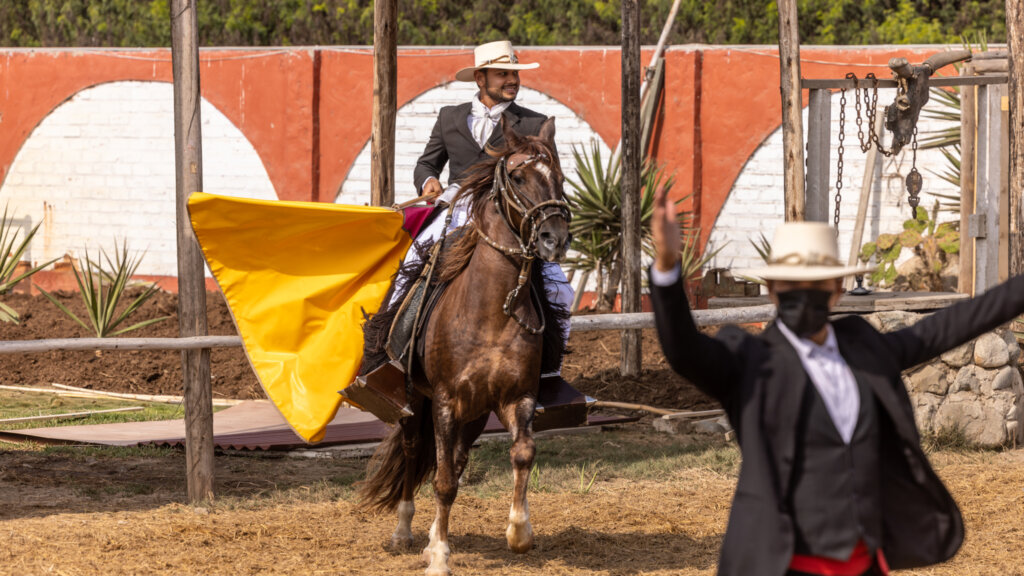
Trujillo is the “Cradle of the of Peruvian Paso Horse.” We enjoyed our lunch in the shade of an outdoor arena where we watched the horses and riders perform intricate, choreographed moves. We returned to our hotel after lunch and changed into our “duck clothes,” grabbed our shotguns and gear, and met our outfitter in the lobby. He had a four-wheel drive Toyota pickup for us and an old car for his bird boys and helpers.
We headed north towards the Pacific coast. We would be hunting a marsh right next to the ocean. The area we drove through was extremely arid. It reminded me of a desert with shifting sand dunes. The coastal plain runs along all of Peru’s Pacific coast, is typically 20–30 miles wide, and traditionally receives minimal rainfall. It was definitely a unique area and not a spot I would expect to have good duck hunting. We transitioned from the paved roads to dirt roads and eventually found ourselves bouncing along on a two-track dirt trail. The majority of residents near the roads lived in adobe buildings without doors and windows. The tracks got rougher and rougher the further from paved roads we traveled. Eventually, the old car with the outfitter’s bird boys and helpers got stuck in a sandy area. We had to pull them out with the four-wheel drive pickup and then continued down the bumpy trail. As we came over the last dune, we saw the Pacific Ocean about a mile away, and a couple of small, narrow ponds surrounded by reeds and grasses running parallel with the ocean. Ducks were in the air. I thought, “We’re finally in the right spot!”
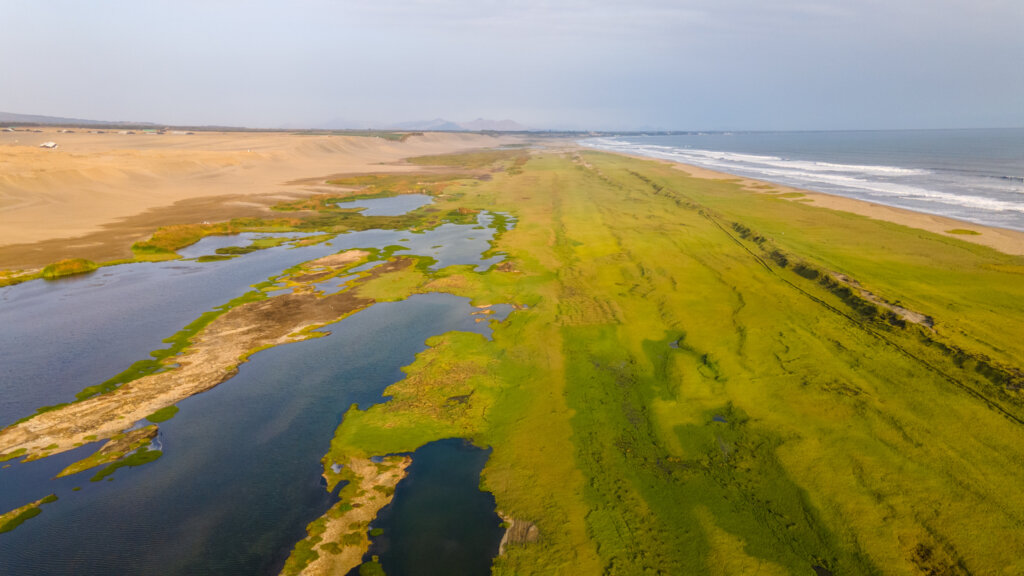
We pulled up to one of the ponds and left Dad, his shotgun and shells, a stool, and his two bird boys. Bird boys is a job description that is not age specific. As it turned out, Dad’s lead, gray-haired bird boy was also the outfitter’s bird boy when he grew up. We drove further south and stopped at a different pond that looked like it had potential. We set up in some tall grass near the edge of the pond. The ducks were moving back and forth in search of their end-of-the-day meal. The action was good, and I ended up with nine birds, including some very nice-looking Cinnamon Teal drakes. I could hear Dad banging away in the distance. By the time we got back to pick him up, he had a mixed bag of about 20 Cinnamon Teal and White-Cheeked Pintail, known in Peru as Bahama Pintails.
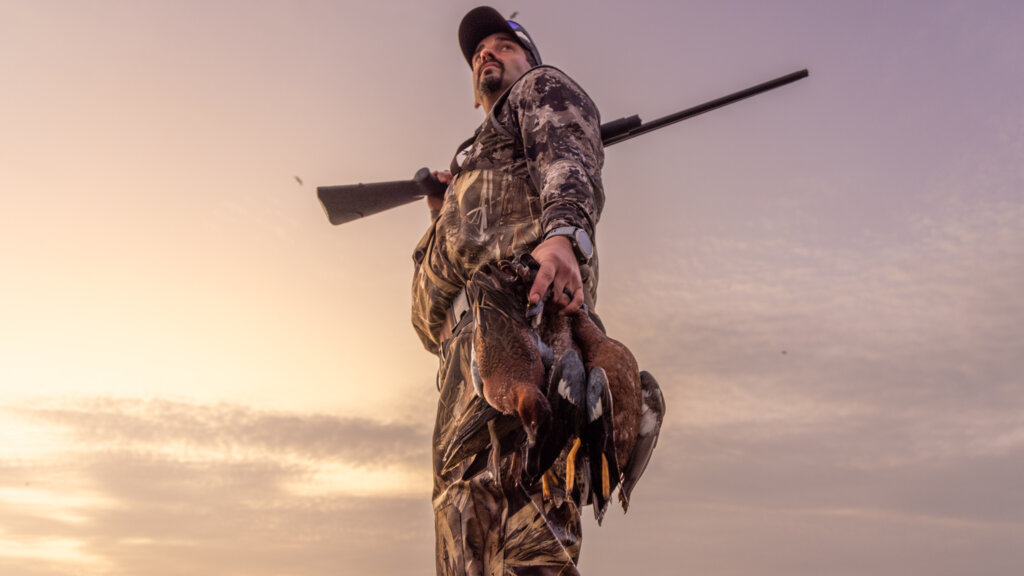
Although we didn’t take down any target species and it was later in the day before we were set up for a hunt, our first full day in Peru was fun and educational. I learned a lot about the country’s culture, and I could see obvious potential in the hunting properties. If you’d like to give Peru’s coastal areas a try, reach out to WTA. Their experienced consultants will make arrangements with one of their experienced outfitters.
Back at the hotel that night, we ate a good meal of seafood and steak,and washed everything down with a local beer. Again, the group couldn’t resist the excellent Pisco Sours to go along with dessert.
